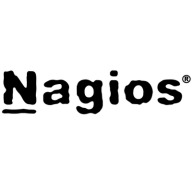

Nagios XI and Sysdig Monitor are competitors in IT infrastructure and application monitoring. Sysdig Monitor often has the upper hand in container support, while Nagios XI maintains strength in network monitoring.
Features: Nagios XI offers comprehensive monitoring with an extendable plugin architecture, suitable for diverse networks. It provides detailed network and server monitoring, making it ideal for traditional IT environments. Sysdig Monitor specializes in container monitoring and real-time cloud-native support, crucial for modern architectures. Its strengths lie in in-depth container insights and dynamic cloud environment adaptability.
Ease of Deployment and Customer Service: Sysdig Monitor offers a cloud-based deployment, simplifying setup with less manual configuration. It provides real-time support beneficial for agile DevOps teams. Nagios XI can require more manual setup but benefits from a large community support base. Both products offer dependable customer service, with Sysdig’s real-time assistance being particularly useful for critical deployments.
Pricing and ROI: Nagios XI has a lower initial setup cost due to its open-source origins, offering appealing ROI for small to mid-sized businesses. Sysdig Monitor’s pricing is higher, reflecting its advanced features and focus on container-centric capabilities. Although it involves higher initial costs, the specialized monitoring can lead to better ROI for organizations heavily invested in cloud-native technologies.


Nagios XI provides monitoring of all mission-critical infrastructure components, including applications, services, operating systems, network protocols, systems metrics, and network infrastructure. Third-party add-ons provide tools for monitoring virtually all in-house and external applications, services, and systems.
Nagios XI uses a powerful Core 4 monitoring engine that provides users with the highest levels of server monitoring performance. This high degree of performance enables nearly limitless scalability and monitoring powers.
With Nagios XI, stakeholders can check up on their infrastructure status using the role-based web interface. Sophisticated dashboards enable access to monitoring information and third-party data. Administrators can easily set up permissions so users can only access the infrastructure they are authorized to view.
Nagios XI Benefits and Features
Some of the benefits and top features of using Nagios XI include:
Reviews from Real Users
Nagios XI stands out among its competitors for a number of reasons. Several major ones are its integration options and monitoring abilities, as well as its alerting features.
David P., a senior DevOps engineer at EML Payments Ltd, writes, “We use Nagios as a network discovery tool. We use Nagios to maintain our uptime statistics and to monitor our services. It has allowed us to be much more sophisticated in our monitoring and alerting.”
An IT-OSS manager at a comms service provider notes, “Nagios XI has a custom API feature, and we can expose custom APIs for our integration. This is a great feature.”
Sysdig Monitor allows you to maximize the performance and availability of your cloud infrastructure, services, and applications. Built on open source, it provides immediate, deep visibility into rapidly changing container environments. You can resolve issues faster by using granular data derived from actual system calls enriched with cloud and Kubernetes context along with Prometheus metrics. Remove silos by unifying data across teams for hybrid and multi-cloud monitoring.
We monitor all Cloud Monitoring Software reviews to prevent fraudulent reviews and keep review quality high. We do not post reviews by company employees or direct competitors. We validate each review for authenticity via cross-reference with LinkedIn, and personal follow-up with the reviewer when necessary.